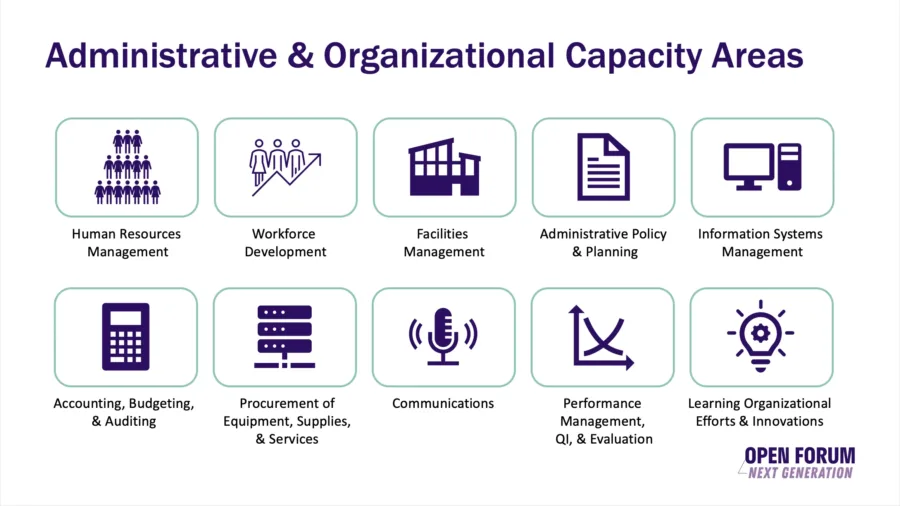The Public Health Infrastructure Grant (PHIG) features foundational capabilities as one of its three core strategy areas. Health department staff funded by PHIG and otherwise are embarking on administrative and organizational improvements in the areas of hiring timeliness, organizational culture, communications, procurement and contracting improvements, and workforce development. These topic areas are fundamental functions of a public health department and are key elements to a strong public health infrastructure.
The Association of State and Territorial Officials (ASTHO) recently launched the Peer Assessment Program focused on assessing the administrative and organizational capacity of public health agencies. The program offers a voluntary, point-in-time assessment process to assist health departments with identifying opportunities for modernizing their agency’s infrastructure and operations to meet the needs of public health. The peer assessment process supports health departments in understanding administrative and organizational gaps, identifying innovative solutions to improve resource allocation and administrative readiness, and enhancing collaboration within and across program areas and teams, as well as with external partners.
The Peer Assessment Program process begins with selecting one to three capacity areas the health departments would like to focus their attention. Each area has 6-10 indicators that seek to collect both quantitative and qualitative data. For example, for the communications capacity area, below are two example indicators that are part of the assessment:
- What percent of the major communications activities described in the agency communications plan have been implemented? (qualitative)
- To what extent are social media communications a part of the health department’s ongoing communications? (qualitative)
The indicators for each capacity area allow health departments to braid data with context to understand the spectrum of strong performance areas to areas where gaps persist. This data is supplemented with site visit interviews with key health department staff and partners for the assessment.

